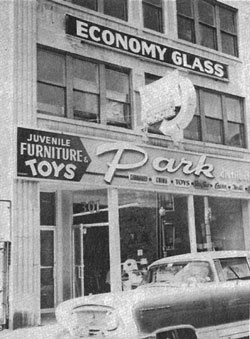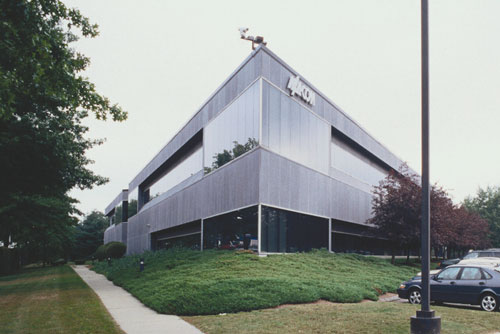It has been a tumultuous couple of years for M/A-COM. The company has been split up and sold off to several different companies by Tyco Electronics and Cobham plc. This iconic company, dubbed "The First Name in Microwave," has been reborn as M/A-COM Technology Solutions (M/A-COM Tech) under its new owner and industry entrepreneur, John Ocampo.
M/A-COM was independent for about 45 years until it was purchased in 1995 by connector giant AMP, a company that wanted to diversify into other markets. In 1999 AMP was acquired by the even larger Tyco International. In 2007, Tyco International split up into three companies, one of which was Tyco Electronics (the medical companies formed a new company called Covidien; the security companies stayed with the Tyco International name). Tyco Electronics contained the former AMP and M/A-COM companies along with many other brands. Shortly after that time, Tyco Electronics decided most of the M/A-COM product portfolio was not part of its future strategy and put the defense and commercial components businesses up for sale.
Cobham plc purchased the commercial and defense components businesses in 2008 with the intent to re-sell the commercial business as soon as a buyer was found. At about the same time, the automotive sensor products were sold to Autoliv, a Swedish auto parts supplier. Cobham recently found a buyer as GaAs Labs purchased the commercial components business, which retains its name developed under Cobham as M/A-COM Technology Solutions (John Ocampo is the owner of the GaAs Labs group, which is also a large investor in Mimix Broadband). In between all of this, Micronetics purchased the RFID product lines from the commercial business in a separate transaction, which should complement the company's existing product lines.
Last year, the private radio group of M/A-COM (Wireless Systems) was purchased from Tyco Electronics by Harris Corp. This should bring strength to both groups as Harris has a strong foothold in the military mobile radio market and M/A-COM Wireless Systems has been growing primarily in the public safety market. Therefore, pieces of the original M/A-COM now reside with Cobham, Autoliv, Micronetics, Harris and M/A-COM Technology Solutions, which is the entity that will carry on the brand name that started 60 years ago in Boston, MA.

Figure 1 Microwave Associates started with $10,000 and rented 2,800 sq. ft. in Boston.
M/A-COM began life in the summer of 1950 as Microwave Associates. Four ex-Sylvania engineers—Vessarios Chigas, Louis Roberts, Hugh Wainright and Richard Walker—started as a consulting and research company for millimeter-wave technology for an expanding microwave industry (see Figure 1). The US Signal Corps was one of their first customers and they soon started producing magnetrons. United Paramount Theaters (now ABC) and Western Union were some of the original investors that helped the company grow, and in 1957 the company moved from Boston to Burlington, MA (see Figure 2) and went public. In its first year the stock went from $7 to $30 per share. Microwave Journal was the first to profile Microwave Associates in its January 1959 issue.

Figure 2 Microwave Associates relocated to a 50,000 sq. ft. facility in Burlington, MA in 1957.
Microwave Associates grew quickly and expanded into the communications and television broadcast industries in the 1960s. During the summer of 1968, the company's equipment broadcast the Mexico Summer Olympics and Democratic Convention. They started expanding geographically by purchasing Microwave and Semiconductor Devices in the UK, and International Microwave Corp. and Huggins Labs in Sunnyvale, CA. In 1969, they acquired Ferrotec, which expanded the company's ferrite line and was the start of its subsystems operation that is now owned by Cobham plc.
During the 1970s, the company leveraged its semiconductor technology and was one of the first companies to start replacing tubes with solid state devices. The company's annual report for 1974 stated, "Almost all major microwave systems produced domestically and abroad (exclusive of the Communist Block) to some degree or other utilize Microwave Associates components." They had a strong hand in helping to develop capabilities that resulted in the proliferation of remote broadcast because much of the mobile broadcast TV equipment was born from the company's technology. They also purchased a long list of companies, including Digital Communications Corp. (expanding its data, voice communications and satellite capabilities), the GaAs products division of Monsanto (they were the only domestic supplier of GaAs for many years until the business was closed a few years ago), various transistor lines from Harvard Industries and KMC Semiconductor Corp., and diodes from Varian. In 1978 Microwave Associates changed its name to M/A-COM Inc. to reflect the growing part that microwave communications would play in its future.
M/A-COM continued to acquire even more companies in the 1980s as it tried to find the right mix of products in the marketplace. Some of these companies would be spun off and develop into major global companies. Among these were PHI (transistors), OmniSpectra (connectors) and Adams-Russell (which included Anzac, RHG, SDI and Eurotec). Others that were acquired and divested included Linkabit (now part of L-3), Laser Diode, Lawrence Labs, Prodelin, MPD and others. Two of the founders from Linkabit (Irwin Jacobs and Andrew Viterbi) went on to found Qualcomm. One of the significant accomplishments during the ‘80s was the development of the scrambling technology that set the standard for future scrambling of cable satellite transmissions for cable providers. M/A-COM's Telecommunications division was a major acquisition for Hughes Networks. In 1984, M/A-COM established the Advanced Semiconductor Operation in Lowell, MA, to focus on GaAs ICs and today is M/A-COM Tech's headquarters (see Figure 3).

Figure 3 M/A-COM Tech's headquarters in Lowell, MA.
After expanding and acquiring so many companies in the ‘70s and ‘80s, M/A-COM spent the first part of the 1990s divesting and consolidating businesses. With the defense markets shrinking, M/A-COM, like many companies in the microwave industry, shifted from about 80 percent defense to 80 percent commercial to take advantage of the growing commercial wireless industries. The first big commercial business came from Lucent Technologies and then AT&T for components for base stations as M/A-COM became a major player in the cell phone market. This later launched into components for handsets. In 1993, M/A-COM had combined several divisions into a new 300,000 square foot manufacturing operation in Lowell, MA (formerly a Wang Laboratories facility) establishing itself as one of the largest employers in the city. In the mid-1990s, M/A-COM used its communications technology to develop a proprietary voice and data network that was adopted by FedEx to track its packages. This launched the company into the private radio business and M/A-COM's IP radio technology has been adopted by several states for their public safety radio networks and systems. M/A-COM won the largest radio contract ever from New York State for $2 B (which has since been cancelled due to disagreements).
In 2000, M/A-COM acquired GaAsTEK labs from ITT to expand its GaAs MMIC product lines, and in 2001 acquired Stellex Microwave Systems. In 2001, the company acquired Com-Net Ericsson and supported the 9/11 rescue effort by supplying EDACS radio systems out of its Lynchburg, VA operation. Two of its key customers, the New York-New Jersey Port Authority and the New York State Police, were operating M/A-COM's EDACS radio systems that were in serious trouble when the towers collapsed. Within a 20-hour window after receiving the call for help, the M/A-COM team produced and shipped via rental truck 300 portable radios for the Port Authority and 200 portable radios for the New York State Police to assist the emergency responder teams in their recovery efforts. They also worked with a local firm (supplying the amplifier unit) that had designed a listening system to help locate them by using triangulation of the cell phone's pilot tone signal to locate cell phones within the mountain of debris from the World Trade Center collapse to help find victims.
In 2005, the Aerospace and Defense group produced some of the first mobile IED jammers (Warlock Blue) in record time to deliver them to Iraq to help save the lives of coalition forces. They produced and shipped the first units in 33 days from the time of order by the military and the whole order would be complete in less than 60 days. In the late 2000s M/A-COM ramped up its automotive sensor and antenna products including a patented GPS module for Ford's SYNC system and radar sensors for Mercedes and Audi.
M/A-COM is now reborn from the commercial products businesses sold by Cobham plc to John Ocampo as it comes full circle as an independent company. The company is reorganizing its product portfolio and focusing on its core technologies to bring new products to market. They have had their first profitable quarter and are looking to continue their long and storied history. "The First Name in Microwave" lives on.
